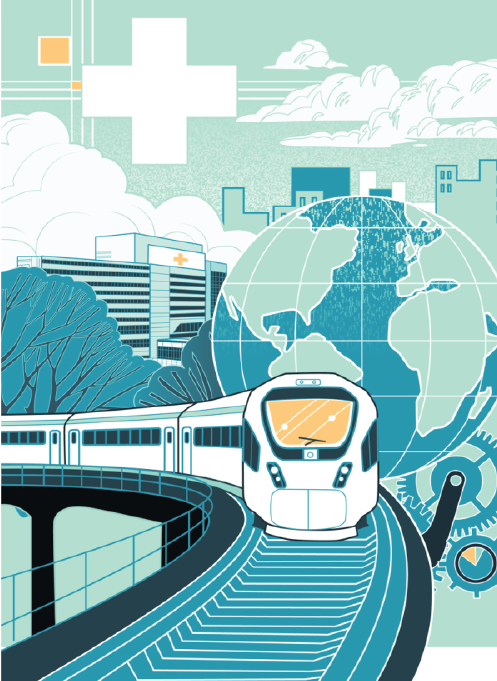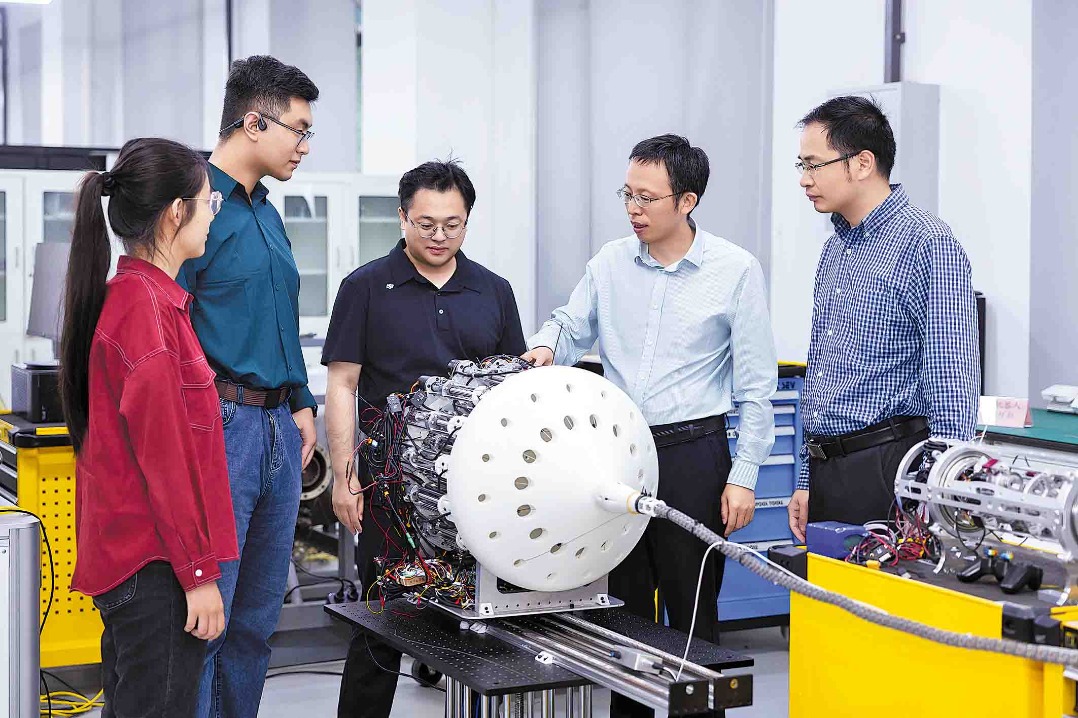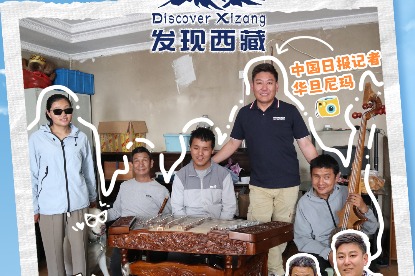Pull through together


Building of Health Silk Road is significant contribution to world's counter-pandemic endeavor and improved global surveillance
The novel coronavirus outbreak has posed new challenges to the Belt and Road Initiative and global health cooperation. The Health Silk Road will become an important strategic area for China to advance the Belt and Road Initiative in the next few years.
The Health Silk Road is being developed because the Chinese government understands the significance of social development and health for all and is acting on this understanding.
Prevention and control of communicable diseases is listed in the Healthy China 2030 Planning Outline as a priority area, with the proposed measures including better surveillance and an improved early warning mechanism, as well as proactive prevention and control and response to public health emergencies both at home and overseas. The Healthy China strategy has played a key role in China's achievements in the fight against the COVID-19 pandemic.
Since the implementation of the Healthy China strategy, the number of healthcare professionals in China has increased from 8.01 million in 2015 to 10.1 million in 2019, constituting a deep talent pool for China's efforts to fight against pandemics. It was the rapid arrival of medical teams from all over the country and the allocation of emergency medical supplies that greatly relieved the pressure on Wuhan and its surrounding cities in the early days of China's fight against the virus in Hubei province.
China has been helping countries involved in the Belt and Road Initiative by sharing its experience and establishing cooperation mechanisms for pandemic prevention and control. In a sense, the joint development of the Health Silk Road is an extension and implementation of the experience and idea of Healthy China at the international level, which represents a Chinese solution for global efforts against the pandemic.
In the early days of the outbreak in China, the Chinese government and people received generous donations from countries and international organizations around the world. When the situation was brought under control at its domestic level, China reciprocated by proactively providing practical and necessary supplies to countries involved in the Belt and Road Initiative based on its strong production capacity following resumption of production and work. From March to September, China exported more than 150 billion masks, 1.4 billion protective suits, more than 200,000 ventilators, as well as a considerable number of goggles, test kits and infrared thermometers, which equipped Belt and Road countries to fight against the pandemic.
Having successfully brought the pandemic under control, China's approach has been recognized by the World Health Organization and most countries in the world. Under the framework of the Health Silk Road, China has sent medical expert teams to more than 30 countries, held hundreds of international videoconferences on pandemic response and shared China's experience without reservation.
In March 2020, the Belt and Road Initiative inter-bank regular cooperation mechanism, known as the Belt and Road Bankers Roundtable Mechanism, released the Proposal to Support China and Other Countries in Fighting the COVID-19 Pandemic, calling on financial institutions in countries participating in the initiative to help fight against the pandemic globally by following closely how the situation was unfolding, contributing financially, donating funds and pandemic supplies and facilitating financing and services. In November 2020, the third China-ASEAN Forum on Health Cooperation toward a Health Silk Road was held in Nanning, Guangxi Zhuang autonomous region, deepening the long-term cooperation mechanism between China and members of the Association of Southeast Asian Nations in disease prevention and control.
With the pandemic still ravaging the world, China is making the Health Silk Road a priority area for the future development of the Belt and Road Initiative.
First, China upholds the leadership of the World Health Organization, thus laying a solid political foundation for global anti-pandemic cooperation. In May 2017, China and the WHO signed a memorandum of understanding on collaboration in the countries involved in the Belt and Road Initiative. China has called on other countries to continue to support the WHO's leadership in global health governance.
Second, China is developing new digital health infrastructure and providing technical support for global counter-pandemic cooperation. Promoting advanced technologies and products such as information technology, biotechnology and artificial intelligence not only makes the pandemic response more science-based and technology-empowered, but also meets the goal of advancing the Belt and Road Initiative to high standards as outlined in the 14th Five-Year Plan (2021-25). The construction of new health infrastructure has not only accelerated the adoption of telemedicine consultation, remote pharmacy services, health insurance and medical technology innovations, but also promoted the development of various emerging business formats such as e-commerce, online education and online offices, thus striking a balance between economic growth, social stability and pandemic response to a certain extent.
Third, China has been developing and sharing COVID-19 vaccines. In the early days of the outbreak, China began to research and develop various types of COVID-19 vaccines, including whole virus vaccines, nucleic acid vaccines and recombinant engineered vaccines. In May 2020, President Xi Jinping stated in his speech at the videoconference of the 73rd World Health Assembly that China will make its COVID-19 vaccine a global public good when available, contributing to vaccine accessibility and affordability in developing countries. On Oct 8,2020, China signed an agreement with the GAVI vaccine alliance and formally joined the COVAX program.
Finally, China has improved the global medical supply chain, thus fueling global counter-pandemic cooperation. As the largest supplier of personal protection equipment and relevant drugs, China will make greater progress in the manufacturing and export of advanced medical equipment in the future. In light of some developing countries' limited manufacturing capacity, China is increasing investment in these countries, especially in their existing industrial parks alongside the Belt and Road, to improve their production capacity for basic health equipment, which will make China a significant factor in the regional and even global medical supply chain.
The author is an assistant research fellow in the Institute of World Economics and Politics at the Chinese Academy of Social Sciences. The author contributed this article to China Watch. The views do not necessarily reflect those of China Daily.


































